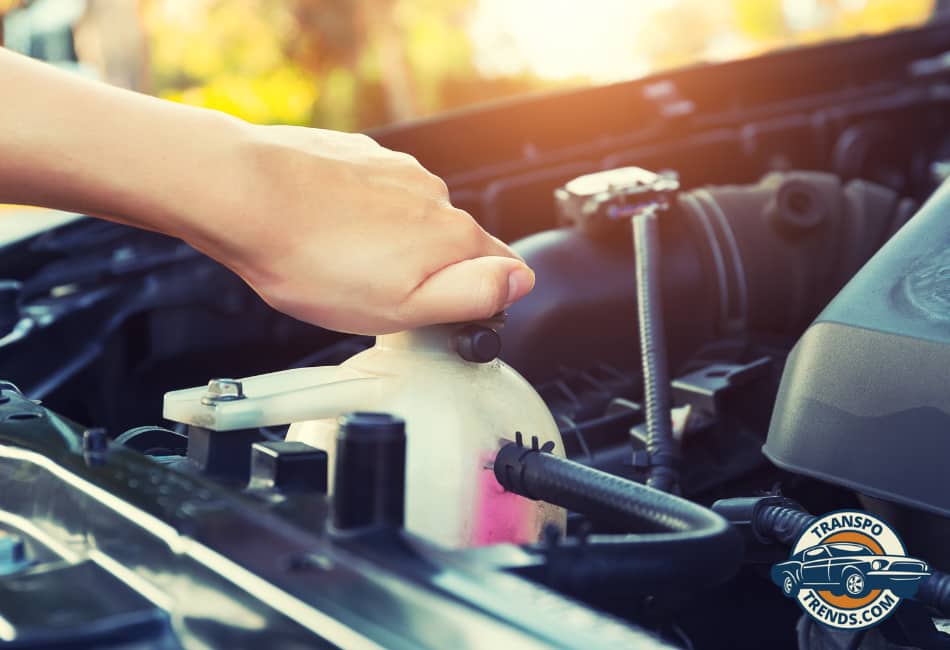The coolant system in a vehicle is an essential component that ensures the engine operates within its optimal temperature range. It prevents overheating, thus safeguarding the engine from potential damage or performance issues.
A curious observation often made is the rising level of coolant when the cap is removed. While ordinary, this phenomenon can perplex others and raise questions about its causes.
In this article, I will delve into the intricacies of this occurrence. Specifically, I will explore seven primary reasons that explain why the coolant level might rise when the cap is removed.
These reasons range from the effects of temperature variation and air entrapment to the possibility of a system leak, faulty radiator cap, and the presence of air in the cylinder head.
Each of these factors plays a distinct role in the coolant system dynamics and, thus, influences the coolant level.
Coolant Level Rises When Cap Removed: Here’s Why
1. Pressure Buildup
- Coolant System Pressurization
The coolant system in vehicles operates under a certain pressure, which is instrumental in raising the boiling point of the coolant and enhancing the system’s efficiency.
This pressurization is orchestrated by the radiator cap, designed to maintain a specific pressure range in the system.
- The Effect of Pressure on Coolant Level
The contained pressure is released when the cap is removed from a pressurized system, causing the coolant level to rise.
The process is akin to opening a fizzy drink; the sudden drop in pressure allows the gases to expand, pushing the liquid upwards.
- The Dangers of Rapid Pressure Release
One should exercise caution when removing the radiator cap, especially when the engine is hot.
Releasing the pressure too quickly may lead to a sudden surge of boiling coolant, posing a risk of severe burns.
Therefore, it’s always advised to let the engine cool down before removing the cap or using a rag to release the pressure slowly.
2. Temperature Variation
- Effect of Temperature on Liquid Volume
Temperature plays a significant role in determining the volume of liquids. This is due to the underlying kinetic theory of matter, which posits that particles of matter are always in motion.
As the temperature increases, these particles move more rapidly, causing the liquid to expand and consequently increasing its volume.
- Coolant Expansion in Hot Conditions
The coolant in your vehicle’s system is no exception to this principle. When the engine runs, it produces a significant amount of heat, causing the temperature of the coolant to rise.
As the coolant heats up, it expands in volume, and this effect is pronounced in a high-heat environment such as a combustion engine.
- Impact of Coolant Expansion on Coolant Level
When the coolant expands, it occupies more space in the system. If there’s no room for expansion — for example, if the coolant reservoir is full — the coolant level will rise.
This can lead to a dangerous situation, increasing the risk of spillage and possible engine damage.
Therefore, regularly checking your vehicle’s coolant level and top-up if needed is important. Doing so will help you avoid any unexpected hazards due to high coolant levels in the system.
3. Cooling System Leak
- Possibility of a Coolant Leak in the System
In the context of a vehicle’s cooling system, there is always a potential risk of a coolant leak.
This could occur for several reasons, such as worn-out hoses, a damaged radiator, or faulty seals and gaskets.
Regular inspections and maintenance are crucial for early detection and prevention of these leaks.
- Impact of a Leak on System Pressure
A leak in the cooling system can cause a drop in the system’s pressure. The cooling system operates under a certain pressure level to increase the coolant’s boiling point and effectively dissipate heat.
However, a leak can disrupt this balance as it allows the pressurized coolant to escape, thereby reducing the overall pressure in the system.
- How Pressure Loss Can Cause Coolant Level to Rise
Interestingly, a loss of pressure in the system can cause the observed coolant level to rise. This is because, under normal pressure, the coolant remains compressed in its liquid state.
When the pressure decreases due to a leak, the coolant expands, mimicking a rise in its level.
However, it’s important to note that this is a deceptive indicator of actual coolant quantity and often signifies a compromised cooling system.
4. Faulty Radiator Cap
- The Part the Radiator Cap Plays in Regulating System Pressure
The radiator cap is crucial in maintaining the pressure within a vehicle’s cooling system. This small yet critical component is designed to be the system’s fail-safe, ensuring the pressure stays within the optimal range.
It achieves this by acting as a pressure relief valve that opens and closes depending on the pressure and temperature within the system, allowing excess pressure to be expelled when necessary.
- How a faulty Radiator Cap Can Fail to Maintain Pressure Properly
However, a faulty or damaged radiator cap can fail to regulate this pressure effectively. If the cap cannot seal properly due to wear and tear or damage, it may not hold the pressure within the required range.
This causes the cooling system to operate under lower pressure, affecting its ability to manage engine heat efficiently.
- How a Faulty Radiator Cap Raises Coolant Level When Cap is Removed.
Interestingly, a faulty radiator cap can also cause an apparent rise in the coolant level when the cap is removed.
This is because a lower system pressure caused by the faulty cap allows the coolant to expand more than it would under optimal conditions.
Consequently, when the system is opened by removing the cap, the coolant seems to rise due to this expansion.
However, it is important to remember that this perceived increase doesn’t signify an actual increase in coolant quantity but indicates a problem with the system’s pressure regulation, often due to a faulty radiator cap.
5. Air in the Cylinder Head
- Air Pockets in the Cylinder Head
Air pockets in the cylinder head of an engine are essentially areas where air has been trapped. During regular operations, the cooling system aims to circulate coolant uniformly in the engine.
However, in certain circumstances, air can get trapped, creating these pockets, which disrupt the normal flow of coolant.
- Impact of Air Pockets on Coolant Circulation
Air pockets can severely affect the coolant’s circulation within the engine. Since air is less efficient than coolant at removing heat, these pockets can lead to localized overheating.
This can cause damage to the engine components over time, potentially leading to costly repairs or even engine failure.
- Removal of the Cap and Release of Air from the Cylinder Head
When you remove the radiator cap, it can result in the release of air from these pockets. As the system pressure drops, the air pockets expand, forcing the coolant level to rise in the radiator.
It’s important to note that this is not a real increase in the coolant quantity. Rather, it’s a sign that there may be air in the system, often indicating a need for system bleeding or even the presence of a more serious issue.
Conclusion
In this in-depth discussion, we have identified seven key reasons why the coolant level might rise when the cap is removed. These include the expansion of trapped air, issues with the radiator cap, and air pockets in the cylinder head.
Each scenario may give the false impression of an increase in coolant quantity, while in reality, this fluctuation is often a sign of underlying issues needing attention.
It is crucial to handle your vehicle’s coolant system with utmost care. This system is critical in maintaining your engine’s temperature, affecting your vehicle’s overall performance and longevity. Misunderstanding or neglecting its signals could lead to serious damage and costly repairs.
We strongly encourage regular maintenance and inspection of your vehicle’s coolant system. Regular checkups can help identify potential problems early, preventing issues related to coolant levels and maintaining the overall health of your vehicle’s cooling system.
By understanding these potential causes and taking proactive measures, you can ensure the longevity and reliability of your vehicle.

